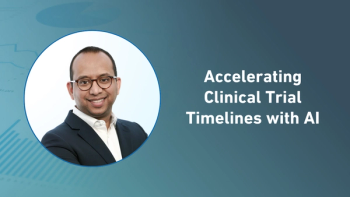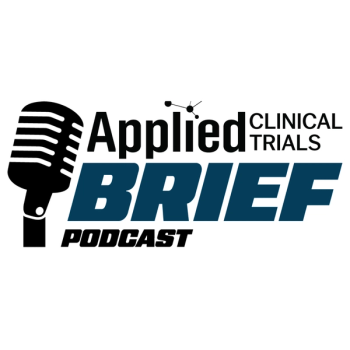"Pharma companies all have accrual challenges and efforts to date have not addressed the organizational barriers faced by hospitals for a strong clinical trials program or their need for a business case, and they have generally not involved the executive leadership of these organizations."
How the Pharmaceutical Industry Can Work More Effectively with Hospitals to Grow Clinical Trials
How pharma–hospital partnerships can overcome operational, financial, and organizational barriers to build high-performing clinical trial programs that expand access, accelerate accrual, and strengthen research capacity across both academic and community settings.
With funding cuts to research and financial pressures on hospitals and physicians, finding new ways for the pharmaceutical industry to work with hospitals is going to be essential for maintaining and growing clinical trial programs.
Among the many strategies needed to expand clinical trials and increase accrual, bringing clinical trials to the point of care for patients and the development of high-performing clinical trial operations in hospitals has proven to be especially challenging.1,2
To address this challenge, pharma companies have formed provider coalitions, identified barriers and strategies, and launched initiatives,3,4 yet progress is very slow especially for expansion of treatment trials. New approaches are needed.
This article will:
- Provide an overview of the challenges hospitals face in supporting clinical trial programs.
- Offer strategies to pharma companies that will need the engagement of hospital/health system executive leadership to achieve mutual goals for expansion of clinical trials, particularly treatment trials.
- Present a case study on an enterprise-wide clinical trial improvement initiative.
Clinical Trials and the Hospital Setting
As the major employer of physicians, hospitals and health systems offer the greatest potential to support broad portfolios of trials, especially treatment trials, from highly specialized care to primary care. However, they are complex organizations with many challenges, such as declining margins, reimbursement reductions, and more uninsured patients, workforce shortages, and significantly reduced federal government support for research and other programs.
This is true for academic medical centers (AMCs), where most trials are offered, and for community-based health care organizations where the largest percentage of patients receive their care.
Barriers to an Efficient and High Performing Clinical Trial Operation in Hospitals
The time to open a clinical trial needs to be reduced to 90 days or less yet the average for hospitals is 8.1 months5 and for industry sponsored cancer intervention trials, 170 days.6 Some of the common barriers to be addressed for an efficient hospital-based clinical trials program include:
- Long delays in processes to open a clinical trial, especially for industry trials.
- Research staff turnover and varied levels of expertise.
- Challenges navigating complex regulatory requirements.
- Limited support for physician time being engaged in clinical research while balancing productivity and access targets.
- Insufficient consideration of clinical trials in clinical service line planning and for a clinical practice culture that supports research.
- Inefficient and under-resourced financial processes to support trials.
- Poor alignment of efforts to reach underserved populations for clinical trials with hospital community engagement or population health strategies.7
Given these challenges, accrual to open studies is low in many organizations, which means scientific and financial goals are slow to be achieved or not achieved, patients are not getting the hoped-for access to trials, and pharma companies are slowed in reaching their accrual targets to speed approval of new treatments.
Pharma companies all have accrual challenges and efforts to date have not addressed the organizational barriers faced by hospitals for a strong clinical trials program or their need for a business case, and they have generally not involved the executive leadership of these organizations.7,8
Now more than ever new approaches are needed, and given the federal level reductions in funding for research, there is an opportunity for pharma companies to seize the moment with the development of solutions working in partnership with hospitals that can lead to high-performing clinical trial programs.
Developing High Performing Hospital-based Clinical Trial Programs
Both AMCs and community hospitals should be the target for efforts. For AMCs, clinical trials are essential for their mission and the contributions to research and discovery of their investigators are critical.
However, many struggle with inefficiency, a misalignment and under-resourcing of the functions needed to support trials, and uneven performance across and within clinical departments.9
Community hospitals, where most patients receive their care, can play a vital role supporting clinical research10 and some sponsors are recognizing that they can be nimbler in making changes to be more rigorous in study start up and enrollment.11,12
They offer an opportunity for the creation of high-performing clinical trial platforms for the future with support for building capacity and a business case.8,10 Understanding the specific challenges of each setting is important for developing mutually beneficial solutions.
As noted in Figure 1, there are many factors that are needed for a hospital to have a high-performing clinical trial operation with strong accrual to studies that match its population and research goals, and a sustainable mission and business case.13 Any effort should include each of these factors.
The most important factor for achieving a high-performing clinical trials program is executive-level engagement as they drive priorities and investment and the needed organizational support. For their engagement, it is important to present a vision for how trials benefit the organization and its clinical, research, and financial goals, and to outline the components that are required for an effective program.
Below are the necessary components:13
- Engaged Physicians. Hospitals need a plan to support physician time that is aligned with their profile as academic or clinically focused, while also balancing access challenges and productivity targets.14 Steps should be taken to ease the administrative burden of being engaged in clinical trials, including staff and technology support.15
- Strong and Stable Research Support Staff at the Point of Care. Strategies to reduce staff turnover are needed, including competitive compensation. Turnover is costly, undermines performance, and adds a burden to physician investigators.
- Clinical Operations and Care Delivery Culture Support. The clinic operation must embrace the importance of clinical trials as part of clinical care delivery and offer a culture that supports trials. Clinical research should be incorporated into service line planning and clinical operations staff, and clinical leadership should be educated on the value of clinical trials for patients and for the organization.
- Efficient research administration and processes.Improving these processes requires sufficient staffing and skill levels, technology support and often re-engineered work processes. Hospitals can benefit from external benchmarking on best practices for research operations structures and processes to achieve more than incremental improvements. There are emerging partnership models for research administration functions that can accelerate improvement and sustain these operations that should be explored as an option.5
- Technology support. With the many information technology needs of hospitals, resource support and attention for clinical research program needs are often not a priority. Hospitals should ensure that their clinical trial management system is optimized with the right modules and that research staff support it with timely data submission.16 Clinical trial matching technology solutions are essential for an efficient program and for supporting physician investigators.There is variation in functionality and business models for trial matching technology, so product assessment that includes physician investigators is essential, as well as well-developed plans to integrate into workflows.17
- A trials portfolio that meets research, patient accrual and financial goals. A clinical trials program spans clinical areas, but there is often not an integrated view of the program across the enterprise. Accrual supports scientific and financial goals, yet it is generally low with one survey reflecting an average accrual to cancer trials of 1.5 patients.18
Considerations include:
- Determining the desired portfolio mix for each clinical area and overall to achieve scientific, patient population, and strategic and financial goals including a target for percent of pharma trials, federal trials, and investigator-initiated trials.
- Having an effective feasibility review process so the right studies are opened and able to achieve the targeted accrual.
- Conducting an ongoing assessment of the efficiency of research administration processes and the effectiveness of the trials program in the clinical areas in meeting accrual targets and financial goals.
- Ensuring that financial processes are optimal as many are decentralized.
AMCs have an academic mission that requires clinical trials, but they need to make their programs more efficient with optimized financial performance, a clinical practice culture that better supports trials, and an enterprise-wide plan. For community hospitals that do not have an academic mission, a strategic and business case is needed.
It has been shown that offering clinical trials supports more state-of-the-art care, which can enable hospitals to attract and retain more patients, increase recruitment and retention of specialty physicians, and strengthen their brand.19
Pharma and Hospital Clinical Trial Relationships
The pharmaceutical industry should take steps to work with hospital leadership to develop strategies that support mutual goals which include accrual and financial goals. Without improved clinical trial relationships between pharma companies and hospitals, the financial pressures of the current environment may set back research progress.
In the current state, clinical trial relationships are often between a clinical trial condition-specific pharma representative and a physician investigator. Physicians have limited access to resources or the ability to change organizational processes, and the pharma company representatives are not in roles that can drive policy changes or innovative approaches to the relationship and make processes more efficient.
Working together at the right management level, hospitals and pharma companies should be able to overcome barriers and develop solutions.
Recommended Actions for Pharmaceutical Companies
There is an opportunity for innovative hospital partnership approaches for pharma if they are designed for success. Here are ten suggested action steps:
- Organize your hospital partnerships differently. Place the development and management of partnership strategies at a higher level in your organization.
- Better understand the hospital environment. Learn more about the organizational factors facing hospitals and their ability to conduct trials.
- Engage Hospital Executives. Reach out to the executive leadership of hospitals/health systems for a discussion on the development of a mutually beneficial partnership.
- Develop an assessment tool. Develop an assessment tool with the hospitals on the factors that are needed for an effective partnership so they are in place or there are plans for them to be in place drawing upon the elements in Figure 1.
- Embed organizational factors in the partnership model. Ensure that there is a good mutual understanding of these factors so all understand what is needed for an effective clinical trial relationship and that they are included in the partnership model.
- Set realistic goals. Set realistic goals and be clear on the organizational and culture requirements for each party to achieve.
- Establish a business case for each party. Determine the business case for each party and the elements and timing of a return on investment including time for strategies to be implemented and effective.
- Create a partnership governance model. Establish a relationship steering committee with executive and clinical leadership to meet quarterly at a minimum, at least for the first year, to review progress and course correct as needed.
- Evaluate organizational factors associated with performance. Build in an evaluation of the organizational factors in each organization that aided or impeded the achievement of trial goals to guide future efforts.
- Sequence approach for success. Target specific clinical areas and trials for the initial effort with plans to expand after results have been achieved so that small and specific wins can be leveraged.
A Case Study: Henry Ford Health Initiative to Create a High-Performing Clinical Trial Program
Henry Ford Health (HFH), a leading health system in Southeast Michigan, has nine hospitals and engages in over 2,000 research projects annually. It is comprised of a large academic medical center, Henry Ford Hospital, and eight additional hospitals across the region with a spectrum of research activity.
As part of an initiative to strengthen its research program, HFH embarked upon an assessment of its clinical trials operation, aiming to create a high-performing program to advance and expand research. HFH serves a large and diverse population and has had several high-volume clinical trial programs. For example, for infectious diseases, it was one of the largest enrollers of diverse cohorts into COVID-19 vaccine trials in the country.
However, they had process bottlenecks, substantial variation in roles and operations across departments, high research staff turnover, and lower than desired accrual to trials. These factors limited their ability to expand clinical trials and optimize financial performance.
To address these challenges with consulting support, they launched a comprehensive assessment of all processes with specific attention to scientific and feasibility review, budgeting, coverage analysis, IRB, contracting, the use of the clinical trials management system, a re-assessment of clinical research job description and pay scales, and the clinical practice culture for supporting physician participation in research.
The resulting plan led to restructuring research administration and the clinical trial office (CTO) and an enterprise-wide clinical trial strategy and business plan supported by a return-on-investment analysis. A new position, Vice President for Clinical Research, was created for a physician researcher who would oversee the clinical trial operation and serve as an advocate for the various clinical departments’ clinical research priorities.
With many staff vacancies, it would have taken 12 to 18 months to make significant operational changes and orient new staff in the CTO and Research Administration, and staff turnover would remain a challenge. A stakeholder advisory committee was formed and determined that an outsourced partnership option for trial startup, with experts assuming functions, many off-site, would be more efficient and scalable, enabling more rapid improvement and future growth.
An RFP was issued and a partner was selected. The partnership has led to measurable improvements with 50% decrease in study start-up time, 44% decrease in coverage analysis turnaround time, a 39% decrease in contract negotiation time, and a 29% decrease in budget negotiation time. They expanded the total number of open protocols from 863 to 1,246, a 44% increase in study volume and capacity.
The plan was to sequence actions with the initial effort on operational improvements in research administration and the CTO, and to follow with a focus on the clinical practice culture at the point of care and increasing physician engagement. Clinical research support staff roles were more standardized, salaries were adjusted to be more competitive, and there is now a better coordinated relationship between the clinical departments and the CTO.
The Department chairs and division directors have been engaged in this effort with emerging strategies and resources to increase physician engagement and improve processes. A technology solution to support clinical trial matching was selected with implementation started for cancer clinical trials.
An enterprise-wide clinical trial dashboard for reviewing progress is being developed for review at the executive level of the organization.
The support of executive and clinical leadership has been critical to the initiative’s success, with the CEO of the Henry Ford Medical Group who also serves as Chief Academic Officer and President of the academic hub Henry Ford Hospital, and the Chair of Medicine strongly supporting the project. The organization is now much better positioned for expanded relationships with pharmaceutical industry trial sponsors and to bring even more novel trials and practice changing medicine to the community it serves.
Conclusion
Hospitals offer the potential to have high-performing clinical trial operations, but plans are best initiated by pharma companies. The engagement of executives from each organization is essential for success.
Pharma companies need to adapt the way they manage relationships with hospitals and hospitals need to understand what it takes to have a high-performing program and its strategic value. This can be best realized with hospital and pharma company leadership working together on new solutions to significantly grow clinical trial programs in a way that benefits hospitals, research programs, pharma companies, and ultimately patients.
About the Authors
Donna O’Brien, National Advisor Manatt Health.
David Lanfear, MD, VP Clinical Research and a leading CHF researcher and trialist, Henry Ford.
Jennifer Gibson Levy, VP Academics, Henry Ford.
Tiffany Pearce, Director Clinical Trials Office, Henry Ford.
Sandy Smith, SVP Clinical Solutions and Strategic Partnering, WCG.
References
- Duke Margolis Center for Health Policy White paper. Point-of-Care Research: Integrating Research into Care Delivery, May 2022.
https://healthpolicy.duke.edu/sites/default/files/2022-05/Point-of-Care%20Clinical%20Trials%20Intergrating%20Research%20Care%20Delivery.pdf . Accessed Dec 1, 2024 - Applied Clinical Trials Editorial Staff, Bringing Clinical Trials to the Point of Care, Applied Clinical Trials, Aug 1, 2021. Vol 30, Issue7/8.
- PhRMA web site press release on community-based initiative to enhance diversity in clinical Trials
https://phrma.org/resource-center/Topics/Access-to-Medicines/PhRMA-Joins-Top-Academic-Leaders-to-Announce-New-Community-Based-Initiative-to-Enhance-Clinical-Trial-Diversity . Accessed Dec 1 ,2024 - Genentech Diversity and Inclusion Report 2022
https://www.gene.com/download/pdf/genentech_diversity_and_inclusion_report_2022.pdf Accessed Dec 1, 2024 - Smith S. Accelerating Clinical Trial Activation, Applied Clinical Trials. June 21, 2024. Accessed July 15m 2025https://www.appliedclinicaltrialsonline.com/view/accelerating-clinical-trial-activation
- Kasner M, Fritsche AH, Leong MC, Cameron K, Lee CB, Lin TL, Lee JH, Brogan F, Kovak MR, Honeycutt H, Shaw K, George TJ. North American Cancer Center Clinical Research Capacity and Benchmarking in the Postpandemic Era. JCO Oncol Pract. 2024 Dec;20(12):1612-1619. doi: 10.1200/OP.24.00164. Epub 2024 Jul 1. PMID: 38950320; PMCID: PMC11649174.
- O’Brien D, Sher R, Achieving Diversity in Clinical Trials: Expanding Hospital Capacity to Offer Clinical Trials in the Community. Manatt White paper, Sept 2023. Accessed July 1, 2025
- Henderson L, A Business Case to Bridge Trials and Care. Applied Clinical Trials, Vol 32: 6. June 1, 2023
- O’Brien D, Sher R, Morin A. Achieving a High Performance, Diverse Accrual, Clinical Trial Program in an Academic Health System. Manatt Health white paper
https://www.manatt.com/insights/newsletters/health-highlights/achieving-a-high-performance,-diverse-accrual,-cli . Accessed Dec 1, 2024 - Kaluzny, A., O’Brien, D., Managing Disruptive Change in Healthcare: Lessons from a Public-Private Partnership to Advance Cancer Care and Research, Oxford University Press, New York, (August 2015)
- National Cancer Institute Community Oncology Research Program website
https://ncorp.cancer.gov/ Accessed July 21,2025. - Hirsch B, Locke S, Abernethy A. Experience of the National Cancer Institute Community Cancer Centers Programon community-based cancer clinical trials activity. Journal of Oncology Practice. 2016;12:4; e350-e35.
https://ascopubs.org/doi/full/10.1200/ JOP.2015.005090 . - O’Brien D. Six Actions for Academic Health System Leadership to Achieve a High-Performing Clinical Trials Program. Manatt Health White Paper. September 2025.
- Ryan DP, Chief's Perspective on Physician Burnout. JCO Oncol Pract 20, 11-13(2024). DOI:
10.1200/OP.23.00384 - Georgieff T, Clinical Trial Matching Solutions: Understanding the Landscape Applied Clinical Trials Feb 28,2024
- Shen L, Zhai Y, Pan A, Zhao Q, Zhou M, Liu J. Development of an integrated and comprehensive clinical trial process management system. BMC Med Inform Decis Mak. 2023 Apr 6;23(1):61. doi: 10.1186/s12911-023-02158-8. PMID: 37024877; PMCID: PMC10078087.
- Goldhaber N, Jacobs MB, Laurent L, Knight R, Zhu W, Pham D, Tran A, Patel S, Hogarth M, Longhurst C, Integrating clinical research into electronic health record workflows to support a learning health system, JAMIA Open, Volume 7, Issue 2, July 2024, ooae023,
https://doi.org/10.1093/jamiaopen/ooae023 - Lee C, Werner TL, Deal AM, Krise-Confair CJ, Bentz TA, Cummings TM, Grant SC, Lee AB, Moehle J, Moffett K, Peck H, Williamson S, Zafirovski A, Shaw K, Hofacker JK. Clinical Trial Metrics: The Complexity of Conducting Clinical Trials in North American Cancer Centers. JCO Oncol Pract. 2021 Jan;17(1):e77-e93. doi: 10.1200/OP.20.00501. Epub 2020 Nov 13. PMID: 33186085; PMCID: PMC8202063.
- Holden, D., Reiter, K., O’Brien, D. and Dalton, K. The Strategic Case for Establishing Public-Private Partnerships in Cancer Care, Health Research Policy and Systems (October 14, 2015) 13:44
Newsletter
Stay current in clinical research with Applied Clinical Trials, providing expert insights, regulatory updates, and practical strategies for successful clinical trial design and execution.







.png)



.png)



.png)
.png)
